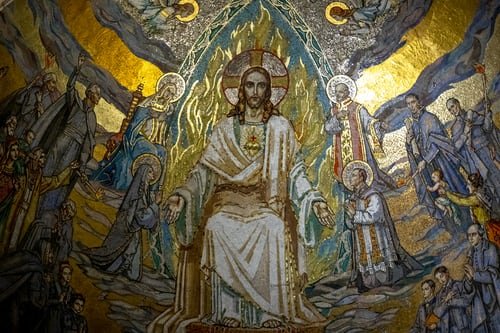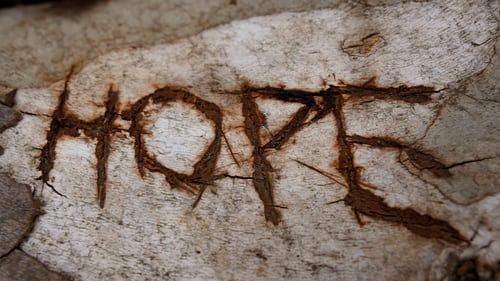Welcome, fellow Christians, to our exploration of Christianity in Peru. This beautiful South American country is home to a rich history of Christianity, from the arrival of Spanish missionaries in the 16th century to contemporary Christian practices and influences on art and architecture.

In this article, we’ll delve into the introduction of Christianity in Peru and its subsequent history, as well as its role in Peruvian culture and society. We’ll also discuss the key Christian denominations and practices in this country, and how they have been influenced by local culture and traditions.
As a youth pastor, I am excited to share with you how the influence of Christianity has impacted Peruvian society and culture. So let’s delve into the details and learn more about this fascinating topic together! Keep reading to discover more.
An Introduction to Christianity in Peru

As Christians, it is important to understand and appreciate the diverse ways in which our faith is practiced around the world. In Peru, Christianity has a rich history dating back to the arrival of Spanish colonizers in the 16th century.
Today, over 80% of Peruvians identify as Christian, with Catholicism being the dominant denomination. However, there are also growing numbers of evangelical and Pentecostal churches in urban areas.
One unique aspect of Christianity in Peru is its integration with indigenous Andean beliefs. This syncretism can be seen in religious festivals that combine Christian symbols with traditional rituals and costumes.
Despite this cultural blending, Christianity faces challenges such as poverty and corruption within church leadership. Nevertheless, many Peruvians find comfort and strength through their faith amidst these struggles.
As we learn about Christianity around the world, let us not only appreciate its diversity but also seek to connect with fellow believers across borders. Let us pray for our brothers and sisters in Peru as they navigate their own unique journey of faith.
The history of Christianity in the country
The history of Christianity in Peru is a fascinating tale that has spanned centuries. From the arrival of Spanish colonizers in the 16th century to modern-day evangelical movements, Christianity has played an important role in shaping Peruvian culture and society.
The earliest forms of Christianity brought by Spanish conquistadors were heavily influenced by Catholicism. Missionaries set up churches and religious institutions throughout the country, which served as centers for education, healthcare, and social services. These institutions helped to spread Christian values while also providing much-needed support to local communities.
Over time, however, new waves of Christian thought began to emerge in Peru. In particular, Protestantism gained traction among indigenous communities who sought a more localized expression of their faith. Evangelical movements took root across the country during the 20th century and continue to thrive today.
Despite these changes over time, one thing remains constant: The message at the heart of Christianity – love your neighbor as yourself – continues to resonate with people across all walks of life in Peru. As Christians around have learned from one another’s experiences around world; they can be encouraged that God’s love transcends human borders.
As we reflect on this rich history and celebrate our shared faith with brothers and sisters around world; let us remember that no matter where we come from or what language we speak – We are united under One God through Christ Jesus!
The role of Christianity in Peruvian culture and society

Christianity has played a significant role in the history and culture of Peru. From the arrival of Spanish missionaries in the 16th century to modern-day practices, Christianity has left an indelible mark on Peruvian society.
The majority of Peruvians identify as Roman Catholic, with Protestantism and other Christian denominations making up smaller portions of the population. The influence of Catholicism can be seen in numerous aspects of Peruvian life, from religious festivals to art and architecture.
But beyond its cultural impact, Christianity also plays a vital role in addressing social issues within Peru. Many churches are involved in community outreach programs that provide aid to those struggling with poverty or addiction.
Moreover, Christianity provides a moral compass for many Peruvians navigating through life’s challenges. Through teaching about love, forgiveness, and compassion for others – Christians strive towards creating stronger communities built on these values.
As we look at how Christianity is practiced around the world it is clear that while there may be differences between cultures – certain core beliefs remain universal: faith offers hope amidst uncertainty; love conquers all things; forgiveness is key when seeking redemption.”
In summary: The role played by Christianity within Peru extends far beyond religion alone – it influences every aspect ranging from rituals & tradition to guiding individuals during difficult times & providing support through community engagement initiatives.”
What are the key Christian denominations and practices in Peru?
Peru is a country that has been heavily influenced by Christian denominations, and as such, it boasts a rich history of religious practices. The three main Christian denominations in Peru are the Roman Catholic Church, Evangelical Protestantism, and the Orthodox Church.
The Roman Catholic Church remains the dominant denomination in Peru. It was introduced to Peru during Spanish colonization in the 16th century and has since become an integral part of Peruvian culture. Many of Peru’s most significant religious celebrations revolve around this denomination.
Evangelical Protestantism is rapidly growing in popularity across Latin America including Peru. In recent years there have been more converts to this branch than any other form of Christianity with Pentecostalism being one of its most popular subsets among young people.
Orthodox Christianity also plays a role within Peruvian society although it may be lesser known or practiced compared to other branches. The majority who practice Orthodoxy come from Greek descent or live near Lima where many Greek immigrants settled over 100 years ago,

Despite different theological beliefs between these three groups they each share fundamental principles such as love for Jesus Christ which unites them under one God despite their differences.
As Christians we should strive to educate ourselves about our brothers and sisters all across the world who profess their faith differently than us so that we can better understand our place within God’s plan on Earth – unity through diversity!
The Influence of Christianity on Peruvian Art and Architecture
Peruvian art and architecture have been heavily influenced by Christianity, with the arrival of Spanish colonizers in the 16th century introducing a new wave of artistic expression to this South American nation.
From intricate carvings on wooden altarpieces to grand cathedrals that dominate cityscapes, Peru’s art and architecture reflect a deep reverence for Christian iconography. The blending of indigenous Andean beliefs with Catholicism created a unique fusion that is still evident today.
One example of this blend can be seen in Cusco’s famous Cathedral Basilica. Built on top of an Incan temple, it incorporates both colonial Baroque elements as well as indigenous motifs such as puma heads into its design. Similarly, churches like San Francisco de Asis showcase intricate murals depicting biblical scenes mixed with local flora and fauna.

The influence of Christianity also extends beyond traditional religious structures, shaping Peruvian folk art such as retablos (small portable shrines) which feature saints alongside Andean deities like Pachamama (Mother Earth).
Overall, Peruvian art and architecture serve not only as expressions of faith but also cultural identity – reflecting the complex history and diversity present in this vibrant country. For Christians seeking to expand their knowledge about how faith has shaped cultures around the world, studying Peru’s artistic heritage provides an insightful lens into how religion can inspire creativity across generations.
Conclusion
From its earliest origins to the present day, Christianity has been a major force in Peruvian culture and society. Whether it’s expressed through religious practices, art and architecture or simply being part of everyday life, Christians have had an incredible influence on Peru. As the Christian faith continues to develop in Peru we hope that young believers will be inspired by what their predecessors have contributed throughout history – from missionaries who helped bring about social reform and justice to faithful servants who continue ministry work today without seeking recognition. We invite you to join us as together we discover more about Christianity in Peru!
















